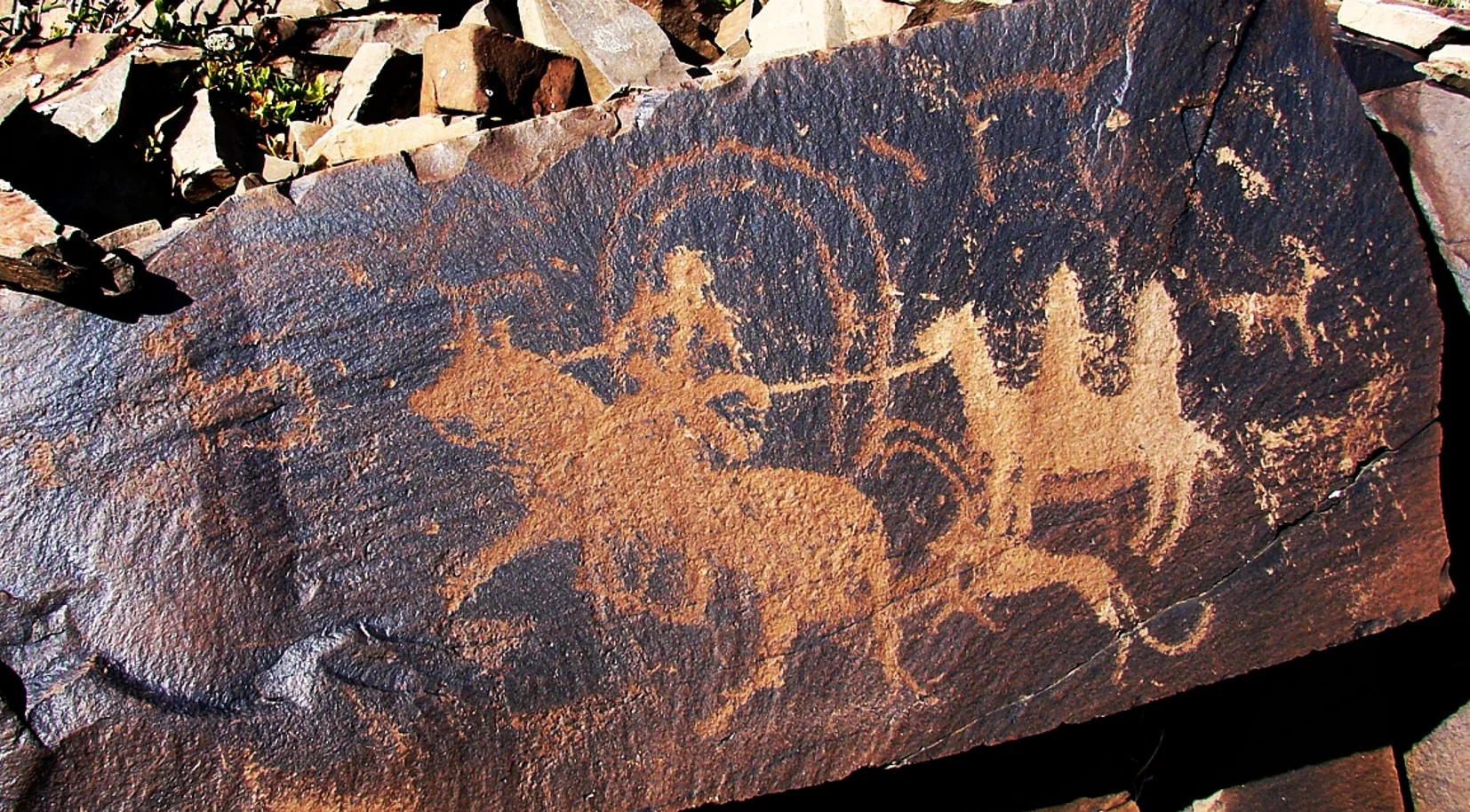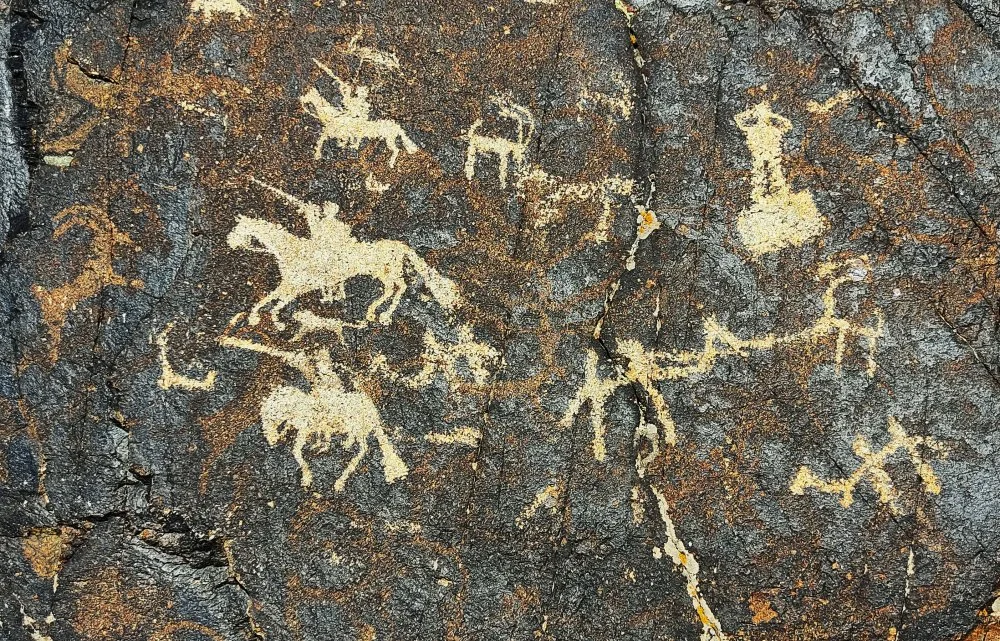Why does a horse need a triangle?
Petroglyph as blueprint for unique technology

Bayan Zhurek/Olga Gumirova
This unique panel from the sanctuary of Ordakul (Zhetysu) is located in the Dauylbai Mountains in a gorge through which a caravan route once passed. A well-trodden road, now overgrown with grass, led the caravans to a plateau with a view of the wide valley and the peaks of the Dzungarian Alatau. Visibility on a clear day was 50-70 kilometers, or even more. This is where this interesting composition of petroglyphs is located.
The ancients knew how to make puzzles. The academic volunteers of the Petroglyph Hunters team did not immediately find the answer to the question: “What does the triangle have to do with the horse in the center of the multi-figure composition?”
The first images appeared here in the Bronze Age, and the last ones in the ethnographic period, 300–200 years ago. The figures were carved not only in different periods, but also in different styles. Some of them have analogies in other petroglyph groups of Eurasia, especially in Mongolia and Altai.
In the center is a large figure of a horse, carved in the Bronze Age, according to some stylistic features, but regularly renewed in the following periods until the Middle Ages.
But what does the huge, mysterious triangle at the bottom of the horse’s body symbolize? A special sign for travelers? A tamga (clan family mark)? Another version appeared after the discovery of a rock fragment in the same gorge with a partially preserved figure of a horse with the same triangle in the lower part of its body. It was thought to be a stirrup. The stirrup is part of the saddle and is used to support the rider’s leg when mounting and riding.
The Turkic petroglyphs of Ordakul are characterized by a peculiarity: in order to draw attention to something important from their point of view, the artists carved an image that was disproportionately large in relation to other figures. Small human figures with huge bows, for example, or giant arrowheads flying toward miniature prey.

Ordakul/Olga Gumirova
Man had already tamed the horse in the Bronze Age, but neither the tribes of the Andronovo culture of the late Bronze Age, nor those who lived later — Scythians, Sarmatians, Parthians, Persians, Greeks, Romans, and others — knew stirrups. Scholars attribute the appearance of the stirrup to the invention of rigid saddles, which probably took place in East Asia in the late 3rd – early 4th century A.D. The invention became an important event in the life not only of the nomads of the Great Steppe, but also of all mankind. Now the rider leaning on the stirrups had much freer hands to handle a spear, sword or bow, making him a much more dangerous fighting unit.
The earliest stirrups were made of leather straps and ropes, as well as wood, while iron stirrups appeared later. They are found in excavations with objects of the 5th century, but already in the 6th–7th century AD, judging by the materials of archaeological researches, stirrups were widely spread among the Turkic tribes of Siberia, as well as in the territory of Kazakhstan and further west. This innovation made the nomadic cavalry a very mobile and dangerous army, and also allowed the nomads to better protect their herds of horses.



